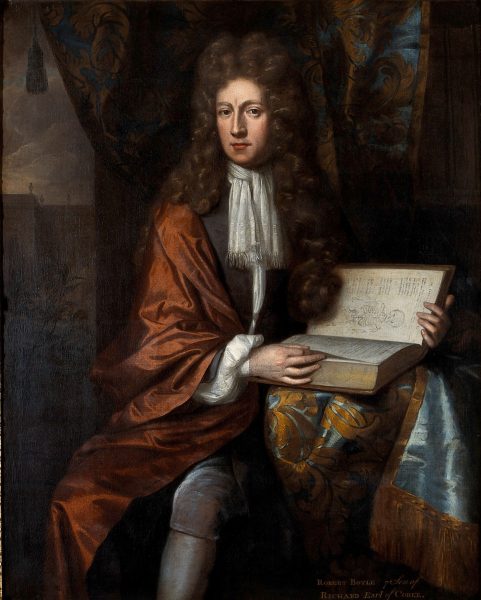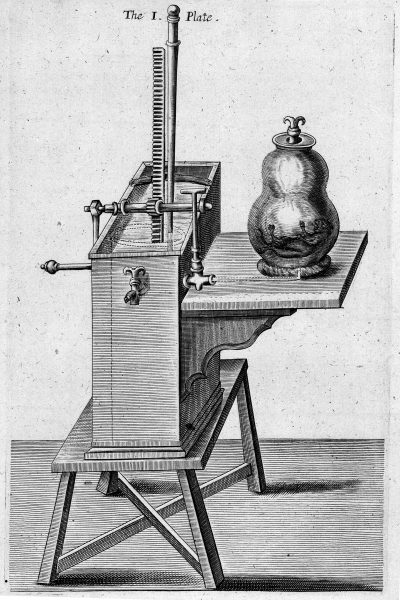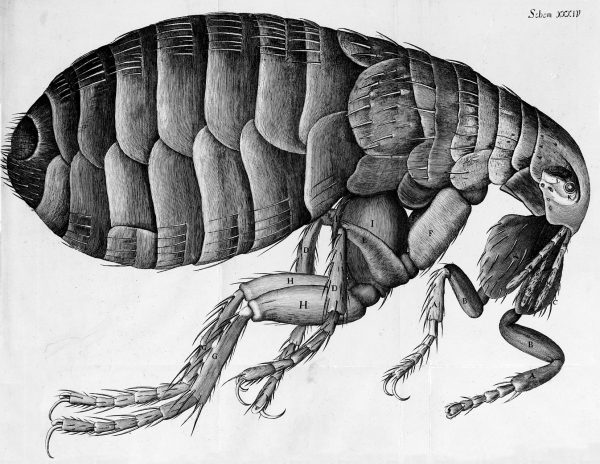The Spread of Knowledge

Robert Boyle (image from the Wellcome Collection, reproduced under a CC-BY licence).

The pump invented by Robert Boyle. In this experiment it is testing the effect of a vacuum on a rat (image from the Wellcome Collection, reproduced under a CC-By licence).
The Royal Society helped new scientific ideas to be spread more easily. Public meetings were held where scientific experiments took place. One of the most famous experiments that took place at the Royal Society was the demonstration of a pneumatic pump invented by Robert Boyle. This was used to test the effect of a vacuum on different objects. He discovered that sound could not travel and a candle could not burn in a vacuum.
Robert Hooke was famous for publishing a book called Micrographia in 1665. This explained how to use a microscope. It also included detailed picture of objects that Hooke had observed under his microscope. Printing was an important way to share new knowledge. The Royal Society helped this by publishing a monthly journal called The Philosophical Transactions. This included new ideas, demonstrations and letters from scientists around the world.

Drawing of a flea seen under a microscope from Robert Hooke’s ‘Micrographia’ (image from the Wellcome Collection, reproduced under a CC-BY licence).
